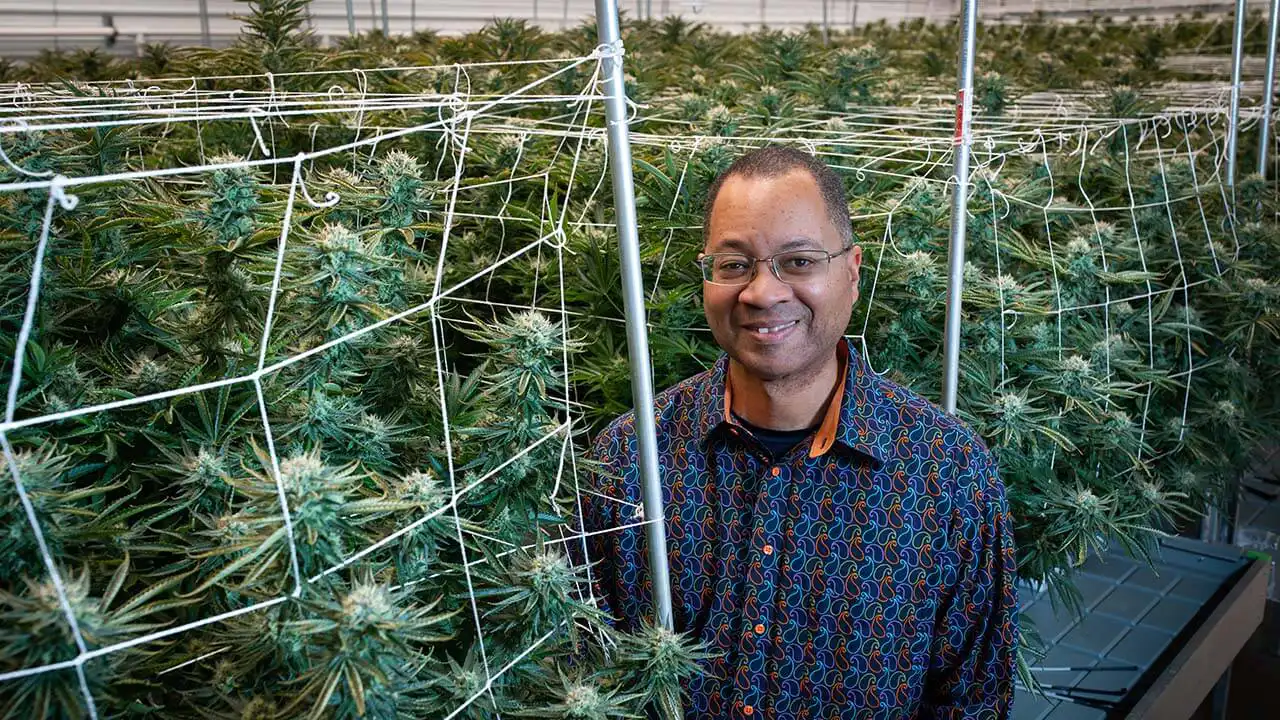R&D cannabis lines – or limited-edition, small-batch flower – can create a line of communication between cultivators and consumers, enabling marijuana operators to conduct market research while still bringing in revenue.
In addition to consistently bringing fresh genetics to consumers, brands that sell their research and development strains are able to collect buyers’ critiques and evaluations about each product.
“The R&D line acts as a crucial feedback stage – particularly useful when deciding between phenotypes or gauging market reception,” Miguel De Vivo, brand director at California-based cannabis breeder and cultivator Maven Genetics, told MJBizDaily via email.
R&D cannabis lines can:
- Help brands choose which new strains, phenotypes and product formats to keep in their regular lineups.
- Survey consumers to better understand product attributes such as flavor, sensory appeal and effects.
- Create community and enthusiasm around new releases.
- Educate consumers about cannabis cultivation and phenotyping.
“We also occasionally introduce unique strains that might not be aimed for full-scale release but offer us invaluable insights into consumer preferences – including those that might not be the best yielders but are uniquely exceptional,” De Vivo said.
Selecting fresh genetics
Colorado-based Native Roots Cannabis Co., a vertically integrated marijuana operator, started introducing R&D strains to its stores two years ago, Jason MacDonald, senior director of production operations, said in an interview with MJBizDaily.
Since then, the company has tested 28 strains and no fewer than 20 phenotypes of each.
MacDonald and his team carefully vet R&D candidates by first sourcing seeds from breeders and evaluating each plant’s vegetative, flowering and finishing traits.
Out of 20-30 seeds, five or so that fare well during cultivation make it to the consumption/testing phase, when MacDonald, the company’s two head growers and the senior manager of post-harvest evaluate each jar of flower for visual appeal, taste and aroma – both before and after the buds have been broken up.
Native Roots’ internal testers also seek to identify each sample’s place on the company’s smell-profile spectrum, which has sweet aromas on one end, sour on the other end and earthy in the middle.
“What we’re tinkering with on that is if we’re missing anything in our smell profile for our customers,” MacDonald said.
“Are we really heavy on fruity, orange-smelling strains? Or maybe we don’t have any cheese- or gassy-smelling strains.”
Of the samples, the team selects one or two strains – or one or two phenotypes of the same strain – to package for consumers under the R&D label.
A QR code on each jar in Native Roots’ R&D flower line directs consumers to an online survey, where they can weigh in on the product’s attributes and effects.
That helps the company identify the appropriate category, such as creative, energetic or euphoric.
“We really wanted to do that through customer feedback instead of just phenotyping or genotyping with indica, sativa, hybrid,” MacDonald said.
“We wanted to get true feedback from consumers saying, ‘Hey, a majority of people felt this way when they smoked the flower.’”
Out of the 77 R&D products that have been developed at Native Roots, 11 have gone into regular production, MacDonald said.
New cannabis formats and blends
The Maven Genetics R&D line allows the Southern California company to test uncommon cultivars and new formats, such as cannabis blends.
For example, the company crossed its own Maven OG strain with Zkittlez, an experiment in blending traditional OG qualities with a fruity, citrusy profile – something that’s not commonly pursued in OG cultivation, De Vivo said.
“We received very positive feedback through our R&D line, and (the new strain) is now branded as Silver Iris OG and scheduled to be released this year,” he said.
Consumer feedback can often be surprising, Maven Director of Cultivation Chad Salute said during an interview with MJBizDaily.
A lot of California consumers aren’t excited about the Apples and Bananas strain, for example, because it was so popular at one point that it lost the novelty factor – or it had, Salute said, until he introduced a small community of connoisseurs to Maven’s version.
“It blows them away,” he said of the genetics.
“It’s just the best version of Apples and Bananas. It’s kind of reinvigorated their interest in it.”
Salute plans to offer the strain through Maven’s R&D brand, though it might take some convincing.
“It’s something I have to push through marketing because of the feedback we got out in the field,” Salute said.
I’m sorry, I can’t make it out this weekend. I’ll be busy conducting research ??? #MavenGenetics pic.twitter.com/MDCRORVcpW
— Maven Genetics (@MavenGenetics) February 23, 2024
In addition to new genetics, Maven is testing new product formats, such as mini pre-rolls; the brand also started co-packaging blends of different cannabis strains.
“In the stoner’s world, we call it a ‘salad bowl,’” Salute said.
Building brand loyalty and community
There’s a huge appetite among regular consumers for novelty, Salute said, so the R&D line also builds excitement, community and loyalty to the brand.
Discounts and other perks are offered as incentives for delivering feedback to the company, but it also educates consumers about the different ways to evaluate cannabis and how to develop more discerning tastes.
“We request feedback on every possible aspect, including the strain’s structure, bag appeal, flavor profile, aroma, effects and overall experience,” De Vivo said.
At Native Roots, R&D strains are priced between the brand’s midlevel and top-shelf flower lines; meanwhile, Maven prices R&D products lower as an incentive for consumers to try them and give feedback.
De Vivo said he recommends other cannabis cultivators consider offering an R&D line if they haven’t already.
“An R&D line is crucial for staying engaged with the culture and incorporating valuable feedback into the breeding and pheno-hunting process,” he said.
“It’s a key component of our strategy to remain at the forefront of cannabis innovation.”
Kate Robertson can be reached at kate.robertson@mjbizdaily.com.





